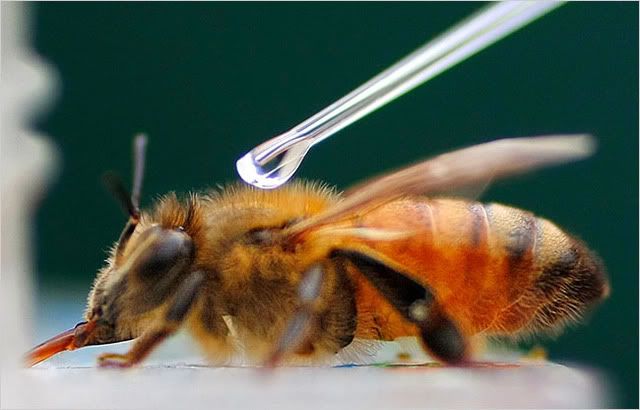
The New York Times has a piece on a group of Australian scientists who conducted an experiment on the effects of cocaine on bees as opposed to humans. The scientists dropped liquid cocaine on the back of certain bees, and when the cocaine reached the brain, they recorded some interesting results. They found that bees react to cocaine much like humans. It hinders their judgement, alters behavior and causes enthusiasm about things which would ordinarily not excite them. The bees also exhibited the same withdrawal symptons as humans
The researchers looked at honeybees whose job is finding food — flying to flowers, discovering nectar, and if their discovery is important enough, doing a waggle dance on a special “dance floor” to help hive mates learn the location.The scientists are now conducting further tests to see if bees, like humans, needmore quantity to recieve the same affect. It's a very interesting experiment, you can view the NY Times in it's entirety here.
“Many times they don’t dance,” Professor Robinson said. “They only dance if the food is of sufficient quality and if they assess the colony needs the food.”
On cocaine the bees “danced more frequently and more vigorously for the same quality food,” Dr. Barron said. “They were about twice as likely to dance” as undrugged bees, and they circled “about 25 percent faster.”


No comments:
Post a Comment